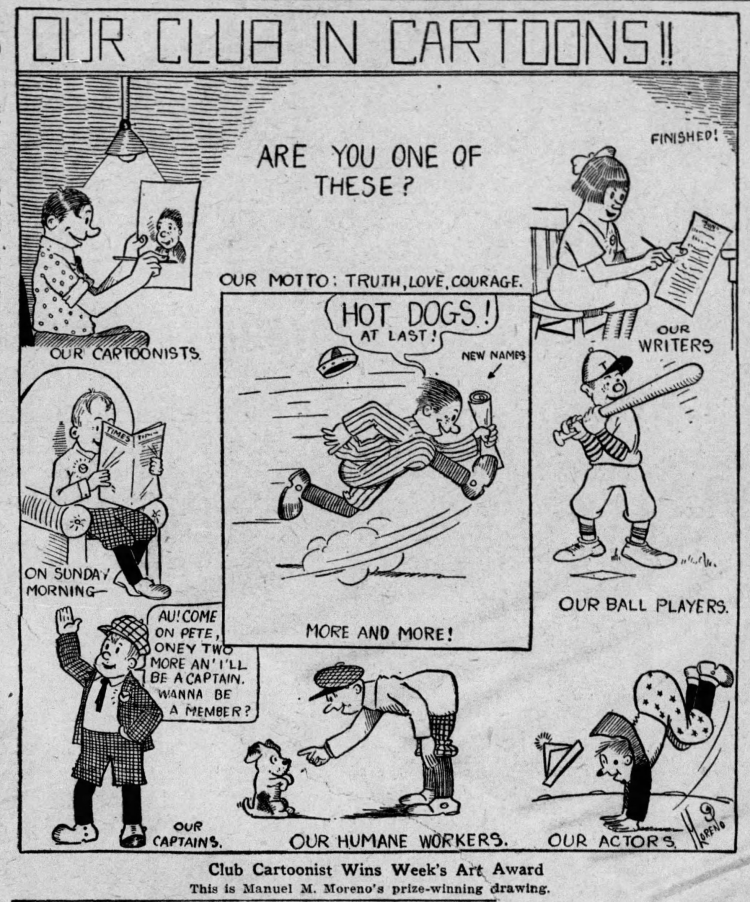Manuel M. Moreno in Wayback Whensday
Skip to commentsWay back one hundred years ago The Los Angeles Times produced a Sunday supplement for and by younger readers it called The Junior Times. That entertainment and educational section ran from July 23, 1922 – July 15, 1934 and our interest in it is that it ran comics by aspiring cartoonists.

One such Junior Times Club Cartoonist who made good was Manuel M. Moreno.
He was a trusted supervisor for Walter Lantz in the 1930s, and also worked for MGM. Disney animators who had worked with Moreno tried multiple times to recruit him to the Mouse House, but he instead took over his brother’s camera shop during World War II, then moved to his native Mexico to run an animation studio. Moreno returned to L.A. in the 1950s, left the world of cartoons, and ran a successful photo-processing store for decades.
Loyola Marymount animation professor Tom Klein is working on a biography of Moreno, whom he called “a figure who really deserved more and could’ve been so much more.” He plans to tell the history of animation in Los Angeles through his book, and has been in the proverbial salt mines for years. That’s how he found out that Moreno was probably the first Latino to pen his own regular comic strip in a major American newspaper, from 1924-26.
Gustavo Arellano, for The L. A. Times and with the help of the aforementioned Tom Klein, profiles Manuel Moreno with a special interest on his Junior Times contributions as a teenager.

With comic strip syndicates, on the whole, located in the Midwest and on the East Coast and animation studios joining movie studios in Los Angeles, Moreno and other Club Cartoonists were absorbed by the moving cartoon business more than the print cartoon career. Some of Manuel’s fellow Junior Times cartoonists included Hardie Gramatky, Bob Wickersham, Phil de Lara, Fred Moore, and Irv Spector.


Comments 1
Comments are closed.